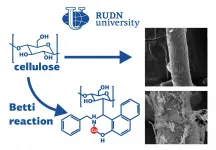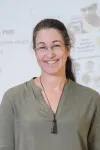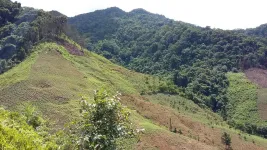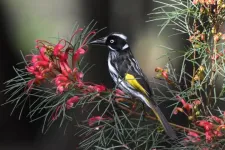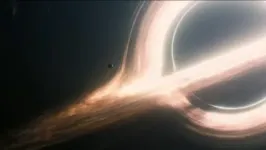RUDN University mathematicians calculate the density of 5G stations for any network requirements
2021-07-12
(Press-News.org) RUDN University mathematicians have developed a model for calculating the density of 5G stations needed to achieve the required network parameters. The results are published in Computer Communications.
Network slicing (NS) is one of the key technologies that the new 5G communication standard relies on. Several virtual networks, or layers, are deployed on the same physical infrastructure (the same base stations). Each layer is allocated to a separate group of users, devices, or applications. To slice the network, one need the NR (New Radio) technology, which operates on millimetre waves. Most of the research in this area is aimed at creating an infrastructure of NR stations that would provide network slicing in each specific case. RUDN University mathematicians have developed a first general theoretical approach that helps to calculate the density of NR base stations needed to slice the network with the specified parameters of the quality of service.
"The concept of network slicing will drastically simplify the market entrance for mobile virtual network operators as well as provisioning of differentiated quality to network services. This functionality is a major paradigm shift in the cellular world enabling multi-layer network structures similar to that of the modern Internet and allowing resource sharing with logical isolation among multiple tenants and/or services in multi-domain context", said Ekaterina Lisovskaya, PhD,
junior Researcher at the Research Center for Applied Probability & Stochastic Analysis at RUDN University.
When constructing the algorithm, the RUDN mathematicians used a model city. NR base stations were distributed with some density. The stations had three antennas, each of which covered 120 degrees. Users of devices with 5G cellular communication network operating in the millimetre frequency range (30-100 GHz) were randomly distributed around the city. They moved and could block each other's line-of-sight with the base station. Each antenna had an effective range, where the connection doesn't break even if the line-of-sight is blocked. The RUDN University mathematicians constructed the dependence of the network characteristics on the density of the station location.
To check the accuracy of the constructed model, mathematicians used a computer simulation. The results of theoretical and experimental calculations agreed. The model shows, for example, how the density of the stations affects the regime of network splitting from full isolation to full mixing. The first one assumes that each layer has its own frequency range of a fixed width. In the second regime, the frequencies of the layers are mixed with each other. The second option is more difficult from a technical point of view, but it increases the efficiency of using physical network resources. RUDN University mathematicians have studied these regimes as two boundary versions of the network implementation -- in real life, some intermediate implementation is usually required. It turned out that the difference in the density of stations between these bounds is small -- one station per 10,000 square meters.
"Our numerical evaluation campaign reveals that the full isolation and full mixing systems' operational regime changes rather abruptly with respect to the density of NR BSs. However, the system parameters may drastically affect the required density. Practically, it implies that at the initial market penetration phase, the full isolation strategy can be utilized without compromising the network performance. However, at mature deployment phases, more sophisticated schemes may reduce the capital expenditures of network operators" said Ekaterina Lisovskaya, PhD,
junior Researcher at the Research Center for Applied Probability & Stochastic Analysis at RUDN University.
INFORMATION:
[Attachments] See images for this press release:

ELSE PRESS RELEASES FROM THIS DATE:
2021-07-12
"All living beings, including us, depend on photosynthesis," says Prof. Wataru Sakamoto of the Institute of Plant Science and Resources at Okayama University, Japan, as he begins to explain the core concepts behind a recent breakthrough in understanding plant physiology, which he was involved in. "Photosynthesis produces the energy needed to sustain plants and the oxygen we breathe. This reaction occurs in two steps, the first of which involves capturing light energy
and producing oxygen. This step takes place in a cell organelle in the plant cells called the chloroplast: specifically, ...
2021-07-12
RUDN and Shahid Beheshti University (SBU) chemist proposed a protocol for converting cellulose into a catalyst for the synthesis of oxadiazoles. The new approach makes the catalyst 3 times more stable compared to the same catalyst obtained by the traditional method. The results are published in Carbohydrate Polymers
One of the directions of green chemistry is the biopolymers functionalization. Chemists modify polymers obtained from plants and animals -- they add functional molecular groups to them to get useful substances. For example, the catalysts for oxadiazoles synthesis are created from cellulose. They are necessary to produce polymers, dyes, medicines, and photographic ...
2021-07-12
Tel Aviv University's new and groundbreaking technology inspires hope among people who have lost their sense of touch in the nerves of a limb following amputation or injury. The technology involves a tiny sensor that is implanted in the nerve of the injured limb, for example in the finger, and is connected directly to a healthy nerve. Each time the limb touches an object, the sensor is activated and conducts an electric current to the functioning nerve, which recreates the feeling of touch. The researchers emphasize that this is a tested and safe technology that is suited to the human body and could be implanted anywhere inside of it once clinical trials will be done.
The technology was developed under the leadership of a team of experts from Tel Aviv University: Dr. Ben M. Maoz, ...
2021-07-12
For quite some time, farmers and researchers have been focusing on how to bind carbon to soil. Doing so makes food crops more nutritious and increases yields.
However, because carbon is converted into CO2 when it enters the atmosphere, there is a significant climate benefit to capturing carbon in soil as well.
Too much carbon finds its way into the atmosphere. Should we fail to reverse this unfortunate trend, we will fail to achieve the Paris Agreement's goal of reducing greenhouse gas emissions by 40 percent by 2030, according to CONCITO, Denmark's Green Think Tank.
As such, it is important to find new ways of sequestering carbon in soil. This ...
2021-07-12
A Moon-scanning method that can automatically classify important lunar features from telescope images could significantly improve the efficiency of selecting sites for exploration.
There is more than meets the eye to picking a landing or exploration site on the Moon. The visible area of the lunar surface is larger than Russia and is pockmarked by thousands of craters and crisscrossed by canyon-like rilles. The choice of future landing and exploration sites may come down to the most promising prospective locations for construction, minerals or potential energy resources. However, scanning by eye across such a large area, looking for features perhaps a few hundred meters across, is laborious and often inaccurate, which makes it difficult ...
2021-07-12
Smoking among young teens has become an increasingly challenging and costly public healthcare issue. Despite legislation to prevent the marketing of tobacco products to children, tobacco companies have shrewdly adapted their advertising tactics to circumvent the ban and maintain their access to this impressionable--and growing--market share.
How they do it is the subject of a recent study led by Dr. Yael Bar-Zeev at Hebrew University of Jerusalem (HU)'s Braun School of Public Health and Community Medicine at HU-Hadassah Medical Center. She also serves as Chair ...
2021-07-12
Forest clearance in Southeast Asia is accelerating, leading to unprecedented increases in carbon emissions, according to new research.
The findings, revealed by a research team including University of Leeds academics, show that forests are being cut down at increasingly higher altitudes and on steeper slopes in order to make way for agricultural intensification.
As a result, more than 400 million metric tons of carbon are released into the atmosphere every year as forests are cleared in the region, with that emissions figure increasing in recent ...
2021-07-12
A Sussex team - including university mathematicians - have created a new modelling toolkit which predicts the impact of COVID-19 at a local level with unprecedented accuracy. The details are published in the International Journal of Epidemiology, and are available for other local authorities to use online, just as the UK looks as though it may head into another wave of infections.
The study used the local Sussex hospital and healthcare daily COVID-19 situation reports, including admissions, discharges, bed occupancy and deaths.
Through the pandemic, the newly-published modelling has been used by local NHS and public ...
2021-07-12
Humans can easily identify sweet-tasting foods - and with pleasure. However, many carnivorous animals lack this ability, and whether birds, descendants of meat-eating dinosaurs, can taste sweet was previously unclear. An international team of researchers led by Max Planck Institute for Ornithology including Dr Simon SIN from Research Division for Ecology and Biodiversity, The University of Hong Kong (HKU), has now shown that songbirds, a group containing over 4,000 species, can sense sweetness regardless of their primary diets. The study highlights a specific event in the songbird ancestors ...
2021-07-12
In the vicinity of black holes, space is so warped that even light rays may curve around them several times. This phenomenon may enable us to see multiple versions of the same thing. While this has been known for decades, only now do we have an exact, mathematical expression, thanks to Albert Sneppen, student at the Niels Bohr Institute. The result, which even is more useful in realistic black holes, has just been published in the journal Scientific Reports.
You have probably heard of black holes -- the marvelous lumps of gravity from which not even light can escape. You may also have heard that space itself and even time behave oddly near black holes; space is warped.
In the vicinity of a black hole, space ...
LAST 30 PRESS RELEASES:
[Press-News.org] RUDN University mathematicians calculate the density of 5G stations for any network requirements


